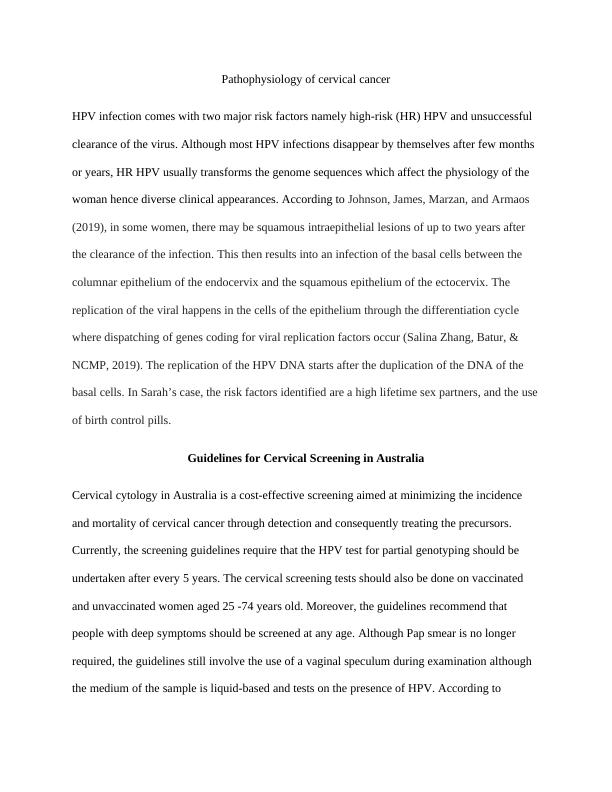Pathophysiology of cervical cancer
This assignment requires a description of the pathophysiology of cervical cancer and identification of risk factors in a specific case, as well as an explanation of the latest cervical screening guidelines in Australia and the rationale behind the change from two to five years.
3 Pages686 Words31 Views
Added on 2022-08-22
Pathophysiology of cervical cancer
This assignment requires a description of the pathophysiology of cervical cancer and identification of risk factors in a specific case, as well as an explanation of the latest cervical screening guidelines in Australia and the rationale behind the change from two to five years.
Added on 2022-08-22
ShareRelated Documents
End of preview
Want to access all the pages? Upload your documents or become a member.
What Is a Case Study? | Examples & Methods
|5
|698
|17
Cervical Cancer: Definition, Historical Perspective, Pathophysiology, Prognosis, Follow-up, Future Treatment
|2
|829
|383
Cervical Cancer: Screening, Risk factors and Pathophysiology Question Answer 2022
|5
|863
|21
Assignment | Nursing Cervical Cancer
|4
|1005
|19
Pathophysiology of Cervical Cancer | Report
|5
|777
|22
Assignment Cervical Cancer
|6
|804
|15

